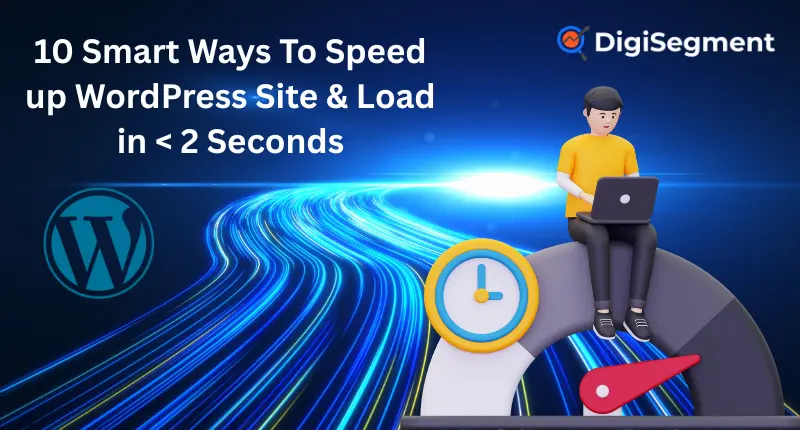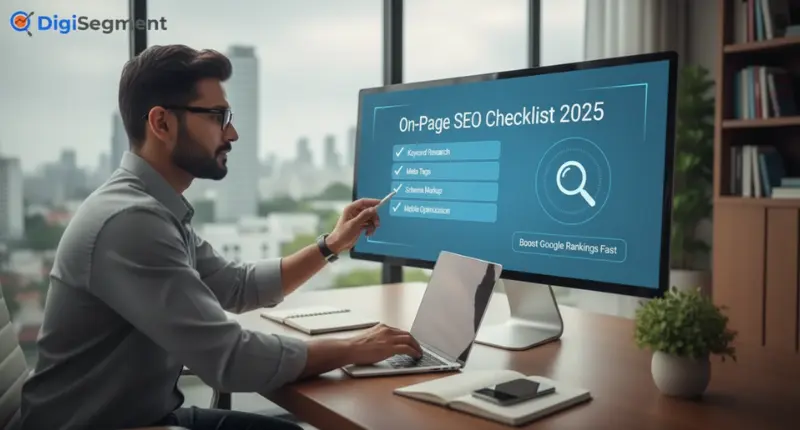If you’re running a WordPress site, you’ve probably noticed that loading speed can directly impact user experience and search engine rankings.
Sites that load slowly have higher bounce rates, lower engagement, and reduced conversion rates. To help you avoid this, we’ve compiled a list of 10 smart ways to speed up your WordPress website and get it loading in under 2 seconds.
Follow these strategies, and you’ll have a blazing fast site that users and search engines love.
Introduction: Why Speed Matters for Your WordPress Website
Website speed has shifted from being a nice-to-have feature to a critical requirement for success.
In fact, Google’s ranking algorithm now takes page speed into account as a ranking factor. When your website loads quickly, you’re essentially hitting two birds with one stone: improved search performance and an enhanced user journey.
Let’s dive into 10 effective ways to accelerate your WordPress website, aiming for load times under two seconds. But first, let’s discuss the importance of having a fast-loading WordPress website.
1. Use the Latest PHP Version
One of the quickest ways to boost WordPress speed is by upgrading to the latest PHP version. If your website is still using PHP 5.6, it’s time to upgrade.
PHP 7.4 and later offer a significant performance boost, especially in terms of server response time.
How to Check and Upgrade PHP:
- You can find your PHP version in your hosting control panel.
- If it’s outdated, contact your hosting provider to upgrade to PHP 7.4 or 8.0.
- Most managed WordPress hosts, like Kinsta and SiteGround, provide automatic PHP updates.
2. Choose Quality Hosting Optimized for WordPress
Hosting plays a crucial role in the performance of your WordPress site. If you’re using basic shared hosting, your site’s speed is likely to suffer.
Upgrading to a managed WordPress host like Kinsta or WP Engine can significantly improve your site’s performance.
Why Managed WordPress Hosting?
- They offer optimized server configurations for WordPress.
- They provide faster load times with built-in caching.
- Some even include free CDN integration to speed up content delivery.
Recommendation: For businesses or eCommerce sites, Kinsta is highly recommended for its fast server infrastructure, automatic backups, and robust security features.
3. Reduce WordPress Plugins
Plugins are one of the most powerful features of WordPress, but using too many can slow down your site. Each plugin adds additional scripts, stylesheets, and other resources that can bloat your site’s load time.
How to Reduce Plugin Overload:
- Regularly review and remove unused or outdated plugins.
- Choose multi-functional plugins to minimize the number of plugins you need.
Ensure plugins are well-coded and regularly updated.
4. Optimize Your Images
Images are typically the largest elements on any webpage, and if they’re not optimized, they can slow down your site considerably. To optimize images for faster loading, you need to focus on both file size and format.
Image Optimization Tips:
- Use the Right Format: Convert images from PNG to JPEG or WebP, which are more lightweight.
- Compress Images: Use plugins like ShortPixel or Smush to automatically compress your images without sacrificing quality.
Lazy Load Images: Enable lazy loading so that images only load when they come into the viewport.
5. Select a Modern & Fast WordPress Theme
The theme you choose has a significant impact on your website’s speed. Older themes or poorly coded themes can result in slower page load times.
How to Choose a Fast Theme:
- When selecting a theme, prioritize those built for quick loading and efficient performance. Themes like Astra and GeneratePress are excellent for performance.
- Avoid themes that are bloated with unnecessary features.
To guarantee quick loading speeds across desktops, tablets, and smartphones, select a responsive theme.
6. Implement a Content Delivery Network (CDN)
A CDN distributes your website’s static content across multiple servers located around the world. This helps deliver content more quickly to visitors, no matter where they are.
Why Use a CDN?
- This technology minimizes loading times by delivering your website’s content from a server geographically nearest to the user.
- This system lightens the load on your primary server, leading to better overall performance.
Cloudflare, for instance, offers a free CDN service that can speed up your WordPress website considerably.
7. Leverage Browser Caching
Browser caching stores static files on the user’s device so that subsequent visits to your site load faster. Without caching, every page load would require the browser to download all assets again.
How to Enable Browser Caching:
- To significantly boost your website’s speed, consider implementing caching plugins such as WP Rocket or W3 Total Cache.
- Configure caching rules for your site’s files, including images, CSS, and JavaScript, to improve load times.
Ensure your server supports proper cache expiration headers.
8. Minimize External Scripts and Ads
External scripts like fonts, JavaScript libraries, and ads can slow down your WordPress website. While some of these scripts are necessary, reducing their number and deferring their loading can improve performance.
How to Minimize External Scripts:
- Limit the use of third-party scripts unless necessary.
- Use async or defer attributes to load scripts after the main content has loaded.
Keep the number of advertisements to a minimum. Excessive ads slow down page loads and provide a poor user experience.
9. Optimize Your WordPress Database
As your WordPress site grows, its database can become cluttered with old revisions, drafts, and other unneeded information. Cleaning up the database can reduce the load time of your WordPress site.
How to Optimize Your Database:
- To keep your database running smoothly, WP-Optimize or WP Rocket are excellent plugin choices for cleaning and optimization..
- Regularly delete post revisions, drafts, and spam comments.
Schedule automatic database optimization to keep things running smoothly.
10. Enable GZIP Compression
GZIP compression shrinks your website’s files, leading to significantly faster load times. It’s an essential optimization technique that should be enabled on every WordPress site.
How to Enable GZIP Compression:
- Check if GZIP is enabled on your hosting by running a test on tools like Check GZIP Compression.
If not, you can easily enable GZIP via your .htaccess file or use a plugin like WP Rocket.
As your WordPress site grows, its database can become cluttered with old revisions, drafts, and other unneeded information. Cleaning up the database can reduce the load time of your WordPress site.
How to Optimize Your Database:
- To keep your database running smoothly, WP-Optimize or WP Rocket are excellent plugin choices for cleaning and optimization..
- Regularly delete post revisions, drafts, and spam comments.
Schedule automatic database optimization to keep things running smoothly.
Conclusion
Implementing these 10 strategies will not only speed up your WordPress site but also improve user experience, reduce bounce rates, and boost your search engine rankings.
Remember, speed is essential for keeping users engaged and ensuring your site ranks higher on Google. Start optimizing your site today and enjoy the benefits of faster loading times!
For more tips on optimizing your WordPress website, visit Digi Segment.
I’m Hardik Vaghani, founder of HV Digital Marketing, a results-driven digital marketing agency. I specialise in SEO, Google Ads, and social media marketing, helping businesses grow their online presence with proven strategies. I’m passionate about creating high-quality, SEO-optimised blogs that educate readers and rank on Google. My goal is to turn ideas into measurable digital success through smart, ethical marketing.













